#saas development
Text
SaaS Development with Strategic Staff Augmentation
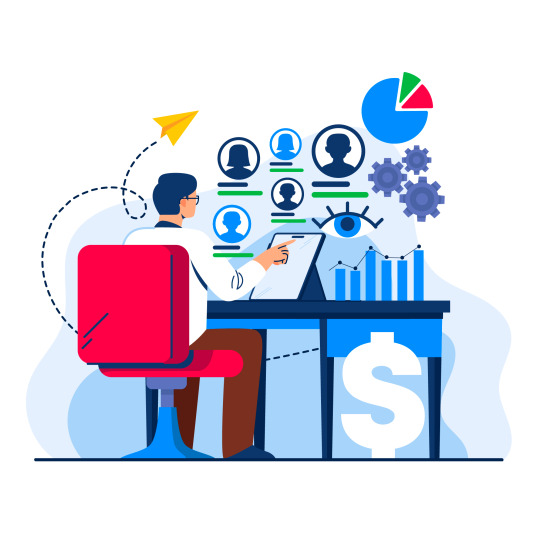
Nowadays, the Tech industry is growing very rapidly, In this article we will discover how staff augmentation will help SaaS development to be a game changer and discover which kind of challenges we have to face while implementing a strategic staff augmentation approach as well as the advantages of staff augmentation in SaaS Development.
For more details: https://www.linkedin.com/pulse/saas-development-strategic-staff-augmentation-ananya-mishra-milgf/
0 notes
Text
Explore the top SaaS product ideas poised to thrive in 2024's digital landscape. From AI-powered analytics platforms to cybersecurity solutions, innovation abounds. Consider offerings like collaborative project management tools and personalized e-learning platforms. Embrace the rise of virtual event platforms catering to remote audiences. The future of SaaS is bright, with endless opportunities for businesses to meet evolving needs
1 note
·
View note
Text
GUIDE TO SUCCESSFUL SAAS APP DEVELOPMENT IN 2024 | SSTech System

Today, businesses of all sizes seek effective online presence, and SaaS has emerged as an ideal solution. It has significantly transformed how applications are developed and deployed in the market. SaaS app development is leading the web app development revolution.
SaaS isn’t just for small businesses. All sizes and types of businesses rely on websites and applications. Leading tech giants like Salesforce, Zendesk, Adobe Creative Cloud, and Canva also leverage SaaS for their business. With the increasing demand for online presence, SaaS is all set to grow more prominent.
According to the 2023 data, the SaaS market boasts an impressive value of approximately $197 billion, with projections suggesting a remarkable surge to reach $232 billion by 2024.
Looking at the data numbers, it is understood that SaaS has become increasingly popular. But how do you make an effective SaaS app? Let’s look at this detailed guide on SaaS application development in 2024.
Understanding SaaS app development
SaaS stands for service as software. It is a process of delivering applications as a service. However, SaaS applications differ from traditional ones because you don’t need to install them. SaaS applications instead work entirely on the cloud. This approach streamlines accessibility, updates, and maintenance, making it a preferred choice for businesses seeking efficient solutions.
What is a SaaS-based solution?
SaaS-based solution is like a software app hosted and taken care of by another company. So, when a pro software development company makes your SaaS app, it becomes a SaaS-based solution. People can use these apps on web browsers without tricky installations or updates.
Benefits of SaaS app development
Cost efficiency: SaaS apps reduce upfront costs associated with hardware and software, allowing businesses to pay for only what they use. This promotes financial flexibility and efficient resource allocation.
Scalability: Easily scale your software infrastructure as your business grows, ensuring the application adapts to changing demands. This scalability supports long-term business expansion without the need for extensive redevelopment.
Accessibility: Users can access SaaS apps from any location with an internet connection, fostering collaboration and remote work. This enhances flexibility, enabling teams to work seamlessly from various geographical locations.
Automatic updates: When you build a SaaS app, it is often managed by a team dedicated to the updates. This saves time for users and keeps the app running smoothly and safe 24×7. Moreover, you don’t have to update anything manually; you get everything done automatically.
Security: SaaS app development often involves robust security measures, including encryption, authentication, and regular security audits. This ensures that sensitive data is protected, reducing the risk of security breaches and unauthorized access.
Rapid deployment: SaaS applications can be quickly deployed compared to traditional software solutions. This speed of deployment allows businesses to implement new tools and features rapidly, responding promptly to market changes and customer demands.
Enhanced collaboration: SaaS platforms often come with built-in collaboration features, such as real-time document editing and communication tools. This fosters teamwork and improves productivity by enabling seamless collaboration among team members, regardless of their physical locations.
What coding language is SaaS?
The choice of programming language is crucial in SaaS app development. There are a variety of web application languages available. The popular coding languages are Java, Python, JavaScript, etc. Each language offers unique advantages, and the selection depends on project requirements, developer expertise, and scalability needs.
What is SaaS app design?
Well! SaaS app design simply refers to the design of your SaaS app. There is no standard design for SaaS apps. Many custom SaaS development companies can help you build the right SaaS app in 2024. However, you can still consider the following points for a smooth development process:
Intuitive navigation: Ensuring users can easily navigate through the application.
Scalability: Designing interfaces that remain user-friendly as the application scales.
Responsive design: Optimizing the app for various devices, providing a seamless experience across platforms.
SaaS App development process
The SaaS application process is not as simple as it sounds; it includes some complex stages. Here are the major stages of SaaS development in 2024.
Conceptualization
The conceptualization phase is the bedrock of any successful SaaS app development project. At this stage, you define the purpose of your business. This stage also includes defining your features and target audience.
Conduct a comprehensive market analysis to identify gaps, needs, and potential competitors. Understand the pain points of your target audience and conceptualize a solution that addresses those issues and provides unique features that set your SaaS app apart.
Planning
Once the conceptualization phase is complete, transition into the planning stage. Develop a detailed project plan as a roadmap for the entire SaaS app development lifecycle.
This plan should include timelines, resource allocation, and key milestones to ensure the project stays on track. Break down the development process into manageable sprints, assigning tasks to the development team based on their expertise. Recognize possible threats and formulate plans to minimize their impact.
Development
With a solid plan in place, transition into the development phase. Write code and build features according to the specifications outlined in the conceptualization phase. Ensure the development team follows best coding practices and standards to maintain consistency and readability.
Pay special attention to scalability and security during the development process. Design the architecture of the SaaS app with scalability in mind, allowing it to handle increased loads and user growth seamlessly.
Testing
Testing is a critical phase to guarantee the reliability and stability of the SaaS app. Conduct thorough testing, including unit testing, integration testing, and system testing, to identify and fix any bugs or glitches. Perform usability testing to ensure that the user interface is intuitive and user-friendly.
Deployment
After successful testing, it’s time to deploy the SaaS app to users. Consider a phased release approach, introducing the application gradually to different user segments. This method helps identify unforeseen issues in a controlled environment and allows for prompt resolution.
Maintenance
The SaaS app development process doesn’t end with deployment; ongoing maintenance is crucial for long-term success. For any SaaS-based app, regular maintenance is crucial. It helps in keeping a check on bugs, security vulnerabilities, and performance issues.
Stay responsive to user feedback, incorporating improvements and refinements based on their experiences. Additionally, consider introducing new features and functionalities to keep the app relevant and competitive.
Let us tell you that the success of SaaS app development in 2024 hinges on the systematic implementation of all these stages.
Final words
To guarantee the optimal performance of your SaaS application in 2024, consider opting for website development services. Dedicated website development services specialize in SaaS development, ensuring the successful creation of web solutions.
Tags:
Custom saas development
Saas App Development
SaaS Development
SSTech System
#Custom saas development#Saas App Development#SaaS Development#SSTech System#website development#web solutions#saas app#software solutions#web application india#tumblr#article
1 note
·
View note
Text
Unveiling the World of SaaS Development: Building for Scalability and Innovation

In the rapidly evolving realm of technology, Software as a Service (SaaS) has emerged as a game-changer, revolutionizing the way software is delivered, accessed, and utilized. This blog post serves as a comprehensive guide to navigating the intricate landscape of SaaS development, emphasizing the pivotal role it plays in fostering scalability, innovation, and unparalleled user experiences.
Introduction: The introduction sets the stage by elucidating the significance of SaaS in modern business ecosystems. It highlights the transformative shift from conventional software models to the subscription-based, on-demand nature of SaaS solutions. The section emphasizes the multifaceted advantages SaaS offers, including cost-effectiveness, accessibility, and seamless updates.
Understanding SaaS Development: This segment delves into the fundamentals of SaaS development. It elucidates the core components, architectural considerations, scalability frameworks, security paradigms, and the critical emphasis on crafting exceptional user experiences. The aim is to provide a holistic understanding of what constitutes the backbone of SaaS development.
The SaaS Development Lifecycle: Breaking down the development process, this section intricately explores the phases of the SaaS development lifecycle. It covers the crucial steps, starting from the inception and conceptualization phase, transitioning through design, development, rigorous testing, deployment, and the ongoing maintenance and updates crucial for sustained success.
Challenges in SaaS Development: Addressing the complexities and obstacles inherent in SaaS development, this part sheds light on challenges such as scaling infrastructure to meet growing demands, ensuring robust security measures, and seamlessly integrating with other systems. It also emphasizes the importance of compliance in an ever-evolving regulatory landscape.
Best Practices for Successful SaaS Development: Highlighting the principles and strategies instrumental in crafting successful SaaS products, this section champions a customer-centric approach. It emphasizes the continuous evolution through customer feedback, the necessity of adaptability, and the agility to pivot in response to market needs.
Case Studies or Examples: Illustrating theory with practicality, this segment showcases real-world case studies of exemplary SaaS products. These cases highlight how adherence to best practices, innovative thinking, and meticulous development methodologies contributed to their success stories.
Conclusion: Summarizing the key takeaways, the conclusion reinforces the pivotal role SaaS development plays in today's tech landscape. It emphasizes the need for an agile, customer-focused approach, driving home the message that scalable and innovative SaaS solutions are the cornerstone of businesses aiming for sustainable growth and success.
Call to Action: Encouraging readers to explore further, this section prompts engagement with additional resources, further studies, or consultations to aid in their understanding and implementation of effective SaaS development strategies.
#SaaS Development#Cloud-Based Software#Software as a Service#SaaS Solutions#SaaS Platforms#SaaS Architecture#Scalable Software Development#Subscription-Based Software#SaaS Deployment Models#SaaS Integration#SaaS Security#Agile SaaS Development#SaaS Application Development#Multi-Tenancy in SaaS#SaaS Metrics and Analytics
0 notes
Text
Ein-des-ein
Phone: (424) 325-0640
Address: 30 N Gould St Ste R 82801, Sheridan, Wyoming 82801
Website: https://ein-des-ein.com/
Ein-des-ein, scripting digital narratives since 2015, goes beyond conventional solutions. Our diverse team transforms ideas into stories, operating across 10+ industries. Evolving from a one-person venture, we've become a reliable partner, ensuring that our design and tech solutions tell compelling stories for your brand.
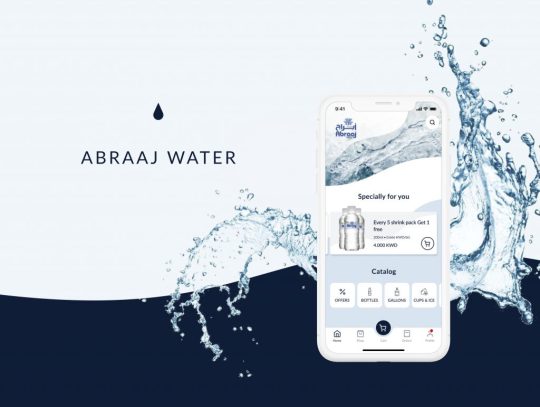

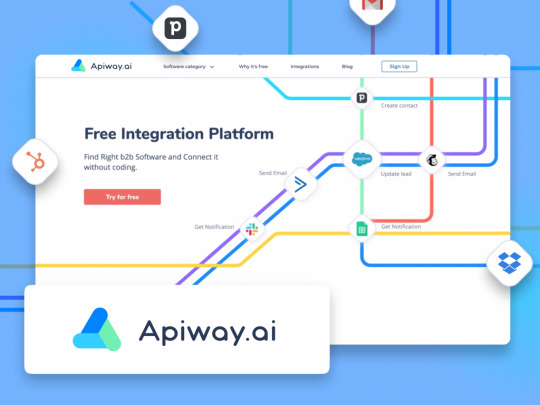
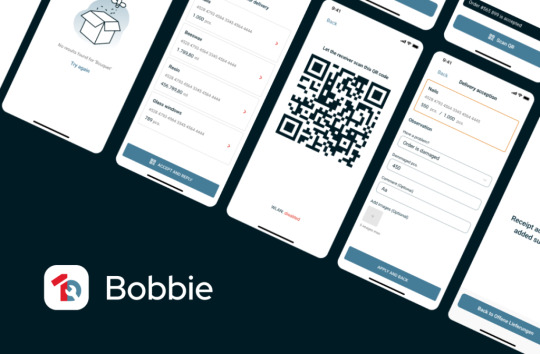
1 note
·
View note
Text
Trusted SAAS App Development Company in the USA | RichestSoft
Discover unparalleled business success with RichestSoft, the premier SAAS App Development Company in the USA. Your gateway to cutting-edge solutions, tailored to meet your unique needs. At RichestSoft, we prioritize innovation, reliability, and expertise, ensuring your operations undergo a transformative journey. Trust us to elevate your business to new heights, offering a seamless blend of advanced technology and tailored solutions. Dive into a world of possibilities at RichestSoft, where your success is our priority.

1 note
·
View note
Text
SaaS Development: Building Cloud-Based SaaS Applications and Services
Software as a Service (SaaS) has transformed the software industry, offering businesses and individuals a flexible and cost-effective way to access and utilize software applications. SaaS development involves creating cloud-based applications that are hosted on remote servers and made available to users over the Internet. This model eliminates the need for users to install and maintain software locally, streamlining the process and reducing operational overhead. Building a SaaS involves several key steps that ensure the development of a reliable and scalable solution.
Understanding SaaS Development
SaaS development entails crafting applications that are centrally hosted on cloud infrastructure and accessible via web browsers. This contrasts with traditional software development, where applications are installed on individual devices. The cloud-based nature of SaaS brings numerous advantages, such as easy accessibility, automatic updates, and seamless scalability.

Key Steps to Build a SaaS
1. Idea and Conceptualization

Every successful SaaS application starts with a clear idea. Identify a problem that the application can solve or a need it can fulfill. Define your target audience, understand their pain points, and conceptualize how your SaaS will address them. In the process of building a Software as a Service (SaaS) application, meticulous planning and thoughtful architecture are paramount.
During this critical step, developers define the technology stack, design the user interface, and structure the application's components. Proper planning ensures that the SaaS solution aligns with the target audience's needs, while a well-considered architecture sets the stage for scalability, security, and efficient development throughout the project lifecycle.
2. Market Research

Research the competitive landscape and market demand to ensure your SaaS idea is viable. Identify similar solutions, analyze their strengths and weaknesses, and find a unique value proposition that separates your SaaS. Market research plays a pivotal role in SaaS development. Developers can fine-tune their ideas and strategies by analyzing the competitive landscape and understanding user needs.
This step helps identify gaps in existing solutions and shape a unique value proposition. Comprehensive market research ensures that the SaaS application is aligned with market demands, leading to a product that resonates with users and gains a competitive edge in the industry.
3. Planning and Architecture

Outline the architecture of your SaaS application. Decide on the technology stack, including programming languages, frameworks, and databases. Plan the user interface (UI) and user experience (UX) design for optimal usability. Planning and architecture form the bedrock of SaaS creation. Detailed planning involves defining the project scope, goals, and resources.
Architecture sets the technical framework, selects technologies, and designs the application's structure. Both ensure that the SaaS aligns with user needs, streamlines development, and supports scalability. A well-structured foundation allows for efficient coding, reduces future complexities, and paves the way for a successful SaaS product.
4. Development

Begin the actual development process. Divide the development into manageable iterations or sprints. Develop the core features of your SaaS application, focusing on functionality, security, and performance. Development is where SaaS concepts materialize into functional reality.
During this phase, coding, testing, and refining take center stage. Core features are coded meticulously, ensuring they align with the planned architecture. Rigorous testing identifies and rectifies issues, resulting in a robust and reliable application. Development is the pivotal stage where ideas transform into user-facing functionality, marking a significant stride toward completing a valuable and innovative SaaS solution.
5. Cloud Infrastructure

Choose a reliable cloud provider such as Amazon Web Services (AWS), Microsoft Azure, or Google Cloud Platform (GCP). Set up the necessary infrastructure to host your application, manage databases, and ensure scalability. Selecting the right cloud infrastructure is pivotal in SaaS development.
This step ensures the application's accessibility, scalability, and reliability, enabling it to adapt seamlessly to user demands. Leveraging cloud infrastructure optimizes performance, simplifies management, and allows developers to focus on enhancing the user experience rather than grappling with hardware concerns.
6. Multi-Tenancy Architecture

Implement a multi-tenancy architecture, a fundamental aspect of SaaS. This architecture allows a single application instance to serve multiple customers (tenants) securely and efficiently. Implementing a multi-tenancy architecture is fundamental to SaaS development. This approach enables a single application instance to serve multiple users or tenants securely and efficiently.
It streamlines resource utilization, reduces costs, and simplifies maintenance. By segregating data and providing customized experiences within a shared environment, the multi-tenancy architecture ensures scalability and optimized performance, which is essential for any SaaS solution's success.
7. Testing and Quality Assurance

Rigorously test your SaaS application to identify and rectify bugs, glitches, and vulnerabilities. Perform unit, integration, and user acceptance testing to ensure a robust product.
8. Deployment and Scalability

Deploy your SaaS application on the chosen cloud infrastructure. Ensure that the deployment process is automated and can be replicated easily. Implement auto-scaling to handle increased user loads efficiently. Deploying a SaaS application onto a chosen cloud infrastructure is a crucial step. This ensures the solution is accessible to users.
Implementing scalability mechanisms is equally vital, allowing the application to accommodate growing user demands. Developers can effectively manage increased workloads by automating deployment processes and enabling dynamic resource allocation. This step ensures that the SaaS remains responsive, reliable, and capable of handling varying usage levels.
9. Monitoring and Maintenance
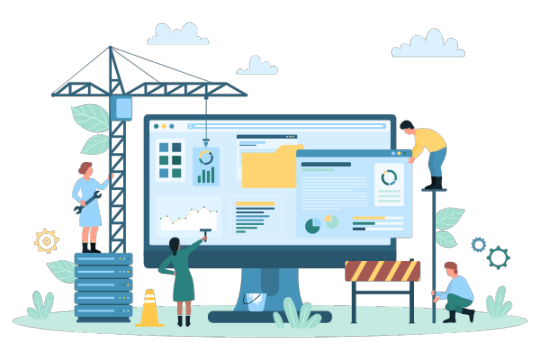
Set up monitoring tools to track the performance and health of your SaaS application. Proactively address any issues that arise and regularly release updates to introduce new features and improvements. Post-launch, continuous monitoring and maintenance are essential.
Monitoring tools track performance, detect anomalies, and provide insights into user behavior. Regular maintenance involves addressing issues promptly, releasing updates, and optimizing functionality. Proactive upkeep ensures the SaaS remains secure, efficient, and user-friendly. By staying vigilant and responsive, developers guarantee a seamless user experience and uphold the reliability of the SaaS application over its lifecycle.
10. User Feedback and Iteration

Once your SaaS is live, gather feedback from users. Use this feedback to make iterative improvements to your application, enhancing its functionality and addressing user needs.
11. Customer Support and Services
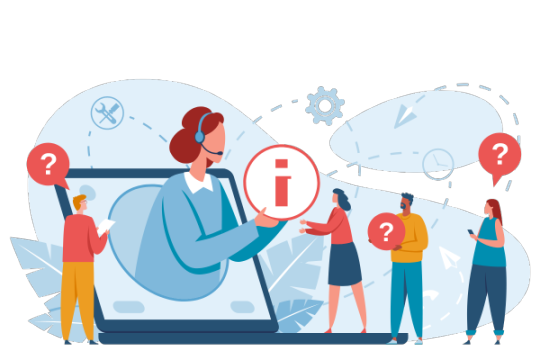
Provide excellent customer support to assist users with any issues they encounter. Consider offering various subscription tiers with different levels of support and services. Exceptional customer support and services are pivotal in SaaS development. Offering responsive assistance and guidance to users builds trust and fosters a positive user experience.
Providing different levels of support, from basic to premium, ensures that users receive the assistance they need. Addressing queries promptly and resolving issues enhances user satisfaction, promotes loyalty, and contributes to the long-term success of the SaaS application.
12. Continuous Innovation

To remain competitive, continuously innovate your SaaS application. Stay updated with industry trends, incorporate new technologies, and evolve your features to meet changing user requirements. Continuous innovation is a cornerstone of successful SaaS development in the ever-evolving tech landscape. After the initial launch, regularly introducing new features, enhancements, and improvements keeps the application relevant and enticing to users.
Staying attuned to market trends, user feedback, and emerging technologies allows developers to adapt swiftly, offering value that resonates with users and maintains a competitive edge in a dynamic market.
SaaS Development Services
SaaS development services offer a solution for businesses looking to build SaaS applications but lacking in-house expertise. These services provide specialized teams with experience in SaaS architecture, development, and deployment. They guide businesses through every stage of SaaS development, from initial ideation to ongoing maintenance.
Conclusion
In conclusion, SaaS development involves creating cloud-based applications accessible over the internet, offering users a convenient and scalable solution. To build a successful SaaS application, thorough planning, proper architecture, security measures, and a customer-centric approach are essential. Leveraging cloud infrastructure, adhering to best practices, and prioritizing user feedback is key to creating a compelling SaaS product. For those seeking assistance, SaaS development services can provide expertise and support throughout the entire development lifecycle.
Embracing SaaS as a software delivery model presents significant opportunities for innovation and growth in today's technology-driven landscape.
#saas#saas development#saas app development#app development#software development#software#software as a service#web portal development#company portal#company portal development
1 note
·
View note
Text
SaaS: Cloud-Powered Software Distribution
Software as a Service (SaaS) embodies a cloud-focused method of delivering software, where software applications are hosted, managed, and updated by a service provider.
0 notes
Text
SaaS offers quick implementation, scalability, and cost-effectiveness, making it an attractive choice for startups and small businesses looking for a straightforward solution. On the other hand, custom software excels in providing personalized features, precise alignment with business processes, and superior user experiences, making it a preferred option for established enterprises seeking long-term cost savings and tailored solutions.
0 notes
Text
Delivering State-of-the-art SaaS Solutions With 12 Factor App Methodology
The 12 factor app methodology is an excellent way to ensure that SaaS systems are built with scalability, portability, and robustness in mind. This app development approach entails a set of guidelines and principles that developers can use to guarantee that their apps are built with a focus on maintainability and repeatability. Also, it focuses on automating deployments and using the best practices.
#outsourcing#software development#web development#staff augmentation#custom software development#it staff augmentation#custom software solutions#it staffing company#it staff offshoring#custom software#saas application#saas app development#why saas#saas development#saas#saas solutions
0 notes
Text
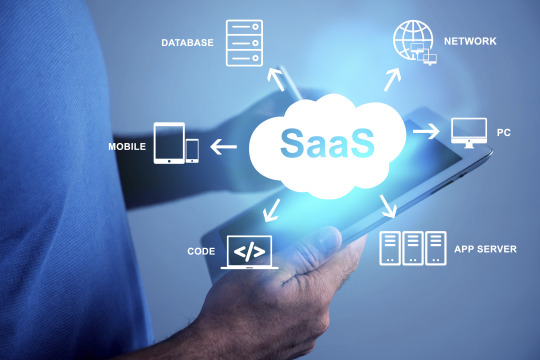
Saas Application Development Company | Saffron Tech
Saffron Tech is a reputable SaaS application development company that specializes in providing comprehensive solutions to businesses looking to develop, deploy, and manage cloud-based software applications. Their SaaS development services are tailored to meet the unique needs and requirements of each client, with a focus on innovation, scalability, and reliability. The company's SaaS applications also come with advanced security features to help businesses protect their sensitive data and intellectual property. With a commitment to innovation and client satisfaction, Saffron Tech is an excellent partner for businesses looking to leverage the power of SaaS to achieve their goals.
#Saas Application Development Company#Saas Application Development#Saas Application#SaaS development
0 notes
Text
Why Choose AWS For Your SaaS Development Project?

Are you planning to build a SaaS application? Read this blog to know why AWS is ideal platform for SaaS application development.
0 notes
Text
0 notes
Text
13 Telegram Alternatives for Your Secure Messaging Needs
Are you seeking Telegram Alternatives? Then read this blog to learn about alternatives to Telegram and get a quick overview. Telegram is a cloud-based instant messaging software that is freeware and cross-platform. End-to-end encrypted video calling, file sharing, VoIP, and other functions are also available.
0 notes